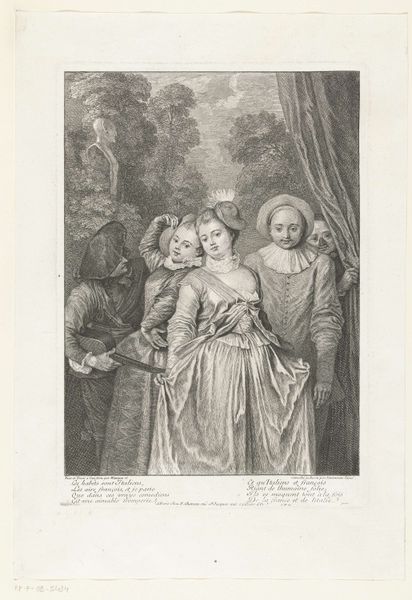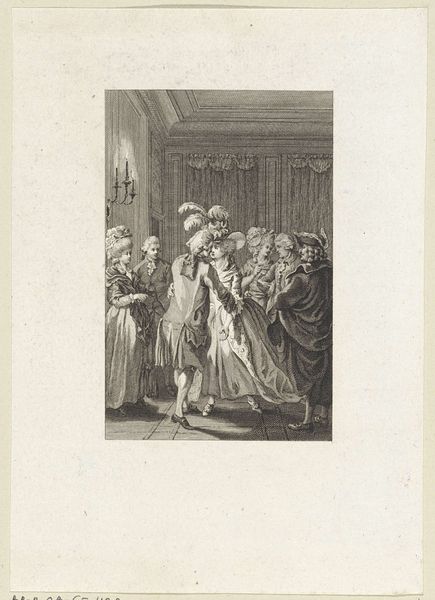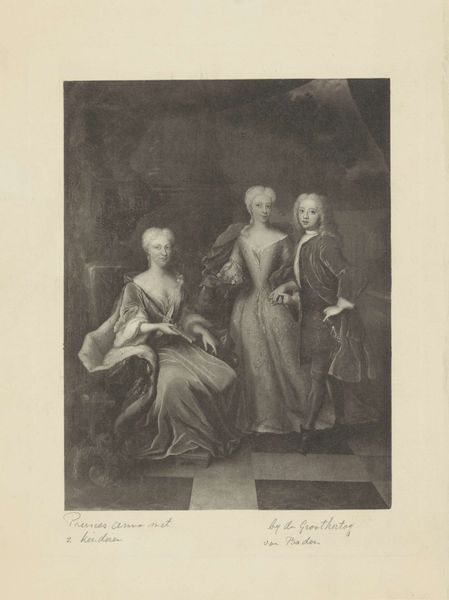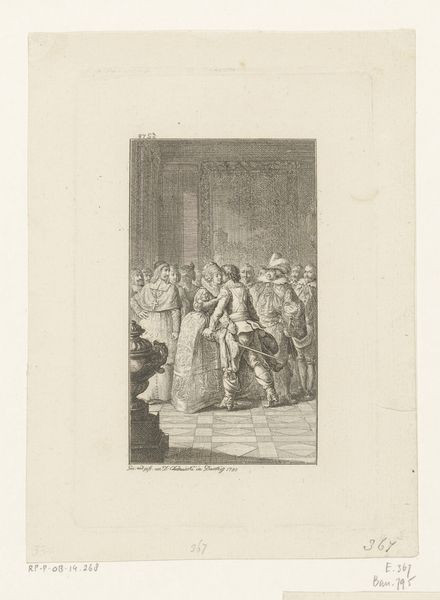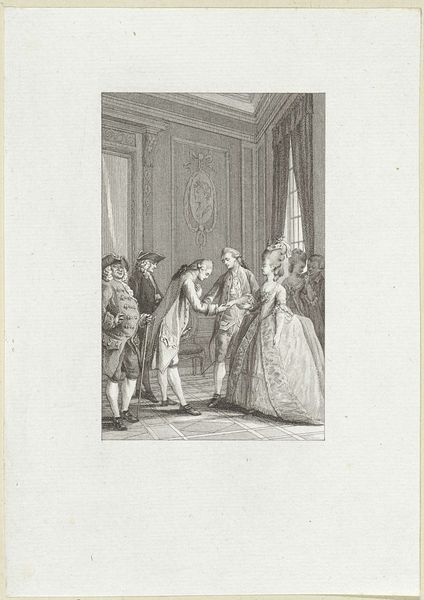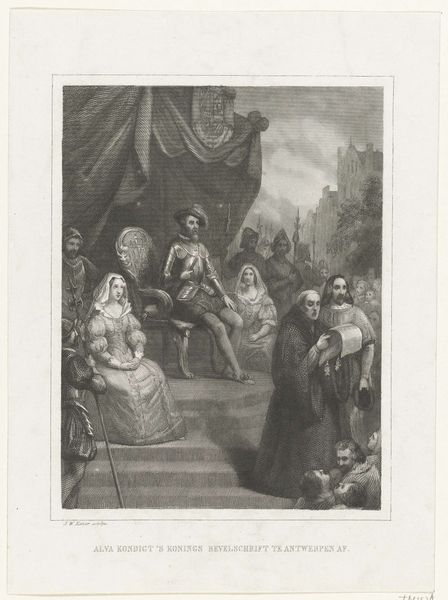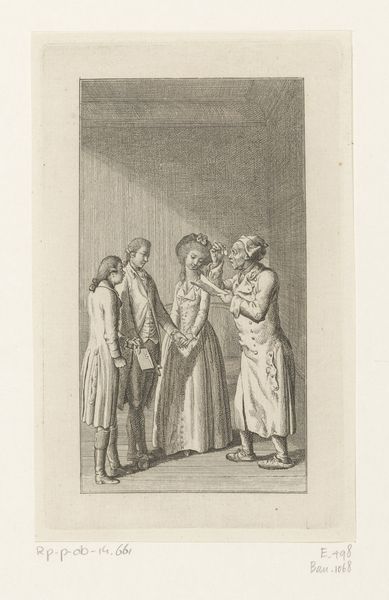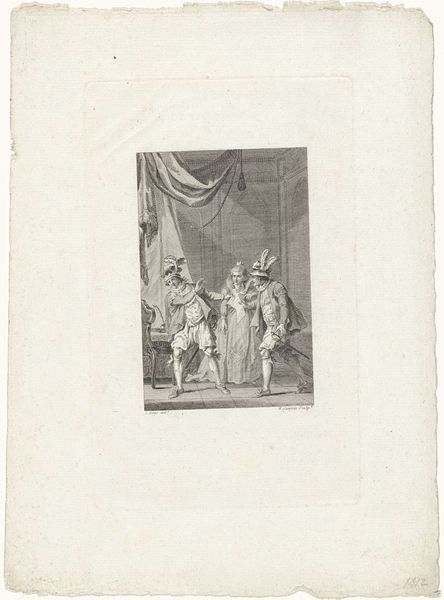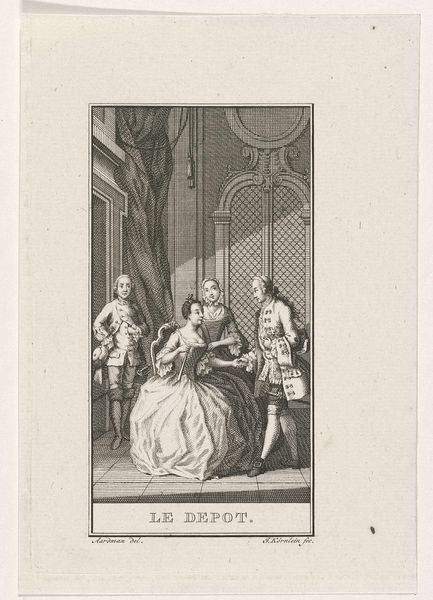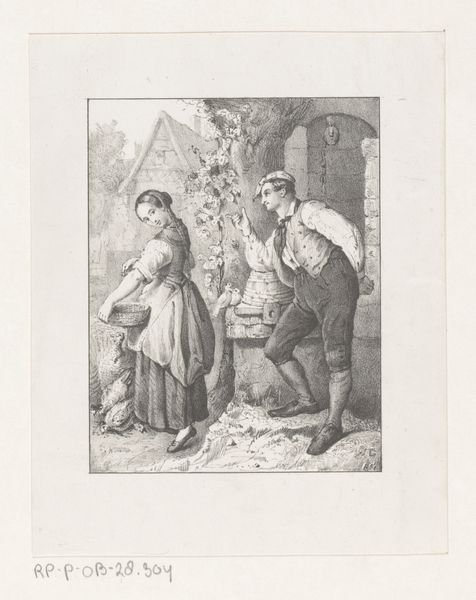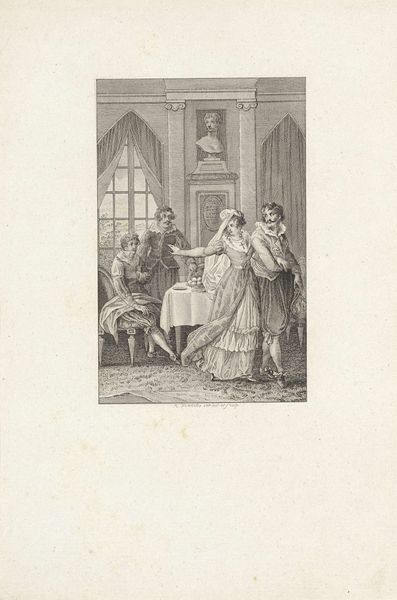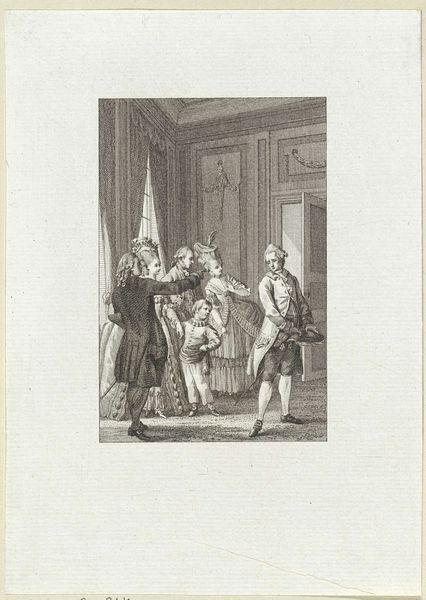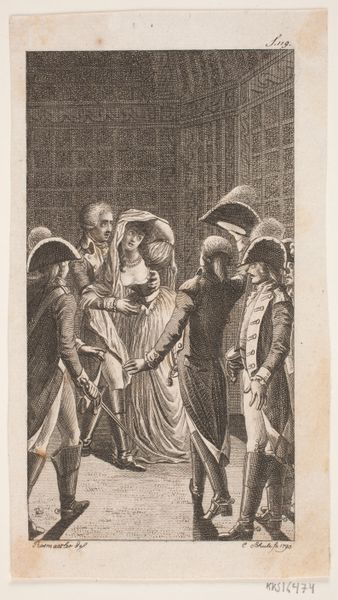
Portret van Louise Henriëtte, prinses van Oranje, en Frederik Willem van Brandenburg 19th century
0:00
0:00
print, engraving
#
portrait
#
aged paper
#
light pencil work
# print
#
old engraving style
#
engraving
Dimensions: height 221 mm, width 178 mm
Copyright: Rijks Museum: Open Domain
Curator: This print from the Rijksmuseum depicts "Portret van Louise Henriëtte, prinses van Oranje, en Frederik Willem van Brandenburg". It's estimated to be from the 19th century, rendered in an old engraving style. My first impression is one of delicate formality. It’s quite dreamlike, really – like a hazy memory from a fairytale. Editor: Absolutely. Given the subjects, that formality speaks volumes about the power dynamics at play. We're looking at an arranged marriage, essentially. Louise Henriëtte was a crucial political pawn, linking the Dutch House of Orange and Brandenburg-Prussia, which ultimately solidified power for the Hohenzollerns. Curator: See, I'm drawn more to the symbolism. The umbrella, for instance – it's not just shielding them from the sun, it's a symbol of status and protection. And the almost ghostly figure of the child holding the horse—does it speak to anxieties about lineage, duty and representation of those born into power, or not born at all? Editor: Interesting that you focus on lineage, because the figures positioned to either side of Louise – her husband to her left, the page boy and equestrian statue to her right – function to solidify not only her status, but to present an idealized notion of aristocratic family. Remember though, this piece was made several centuries later, which raises the question: Whose interests were being served by reproducing it? Was it to romanticize an earlier era? Or something else entirely? Curator: Perhaps. I also think about how their costumes appear less about practicality, and more about announcing themselves to the world. Every element of the prince's outfit screams "wealth and power". It seems deliberately…artificial. Editor: Artificial is right! Everything in their world was about presentation, from their clothing to these contrived engravings. It's important to see that the construction of power relied on manipulating visual imagery. In doing so, this piece underscores the performative aspect of power. Curator: So, looking at it through that lens, it feels a little bit less dreamlike. Perhaps it reflects not an aspiration to an ideal, but a cold calculation? Editor: Exactly! And a carefully manufactured image designed to influence its viewers. The image is a testament to the ways historical art perpetuates very particular ideological perspectives. Curator: Thinking about the piece that way provides a whole new… sharpness. It’s quite telling, I find, how the meaning shifts under different points of view. Editor: Precisely, and hopefully it reveals the active role that art plays in shaping our understanding of the past – and its legacy within our present.
Comments
No comments
Be the first to comment and join the conversation on the ultimate creative platform.
